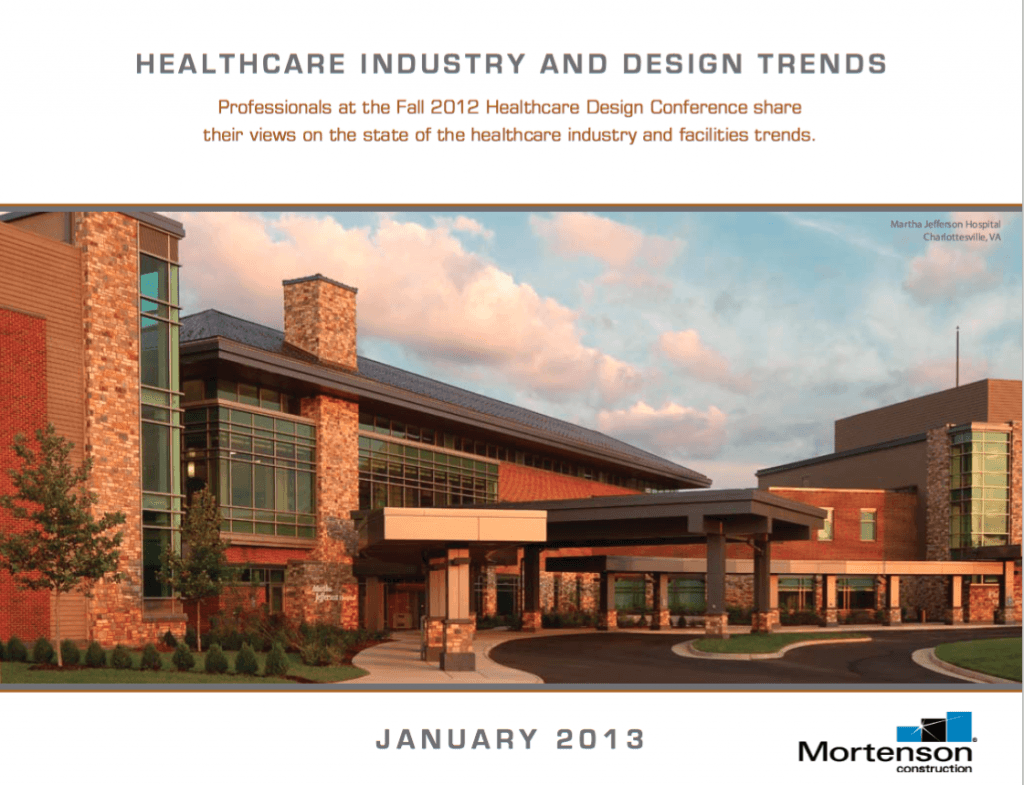
I love it when companies do surveys. Not only is it a great marketing tool, but it provides useful information to everyone else.
Last week, Mortenson Construction released the result of a survey of 170 healthcare and design professionals at the November 2012 HEALTHCARE DESIGN conference in Phoenix. Architects and healthcare providers were asked a mix of questions on industry trends and best practices for design and construction.
You can download a free report on the survey findings, but below is my top 10 list of Mortenson’s key observations. Some of it you’ve heard before, but it never hurts for it to be validated again.
- Industry conditions are beginning to slowly improve from the recession. 80% of healthcare providers reported growing design and construction activity in 2012 and 67% expect continued growth in 2013.
- In addition to reducing costs, improving patient experience and comfort is an important management priority mentioned by roughly one-third of healthcare providers.
- 56% percent of healthcare providers agreed that the design of a facility can have substantial impact on improving patient experience. A strong majority also felt that design contributes to patient outcomes and staff satisfaction.
- 23% of providers talked about creating flexible, multifunction spaces. Just 8% of architects mentioned this.
- Many architects said that facility designs are changing based on evidence-based design (EBD) research. Providers did not mention EBD in that context, but 50% said that interest in evidence-based design is growing significantly at this time.
- Over a third of owners described design and construction team relationships as either adversarial or cordial rather than collaborative or integrated.
- Communication, early involvement of all parties, and user group input help ensure team alignment and project success.
- Building Information Modeling (BIM)/Virtual Design and Construction (VDC) was identified more than any other design and construction practice as a tool that is always utilized in major projects. 10% of providers also recommended employing lean principles to determine objectives and ensure process efficiency.
- Increasing use of technology, such as telemedicine, virtual presence, and robotics will change healthcare practice, which will, in turn, change the built environment.
- While very few are pessimistic, nearly half of participant are only somewhat optimistic or neutral regarding the future of healthcare. Technology and a shift to wellness and preventative care are seen as the keys to creating a viable, cost effective system that can meet the future needs of our society.
P.S. Please do me a favor — if you liked this post and like this blog, please share it with others by sending them the link or posting it on your Twitter, LinkedIn, or Facebook. Also, don’t forget to subscribe, so you’ll get emails when new content is posted. Thanks!
If you like this post, please share.

What’s my story? I’m a healthcare and senior living design knowledge expert who writes and speaks frequently about trends and issues affecting these two industries. I’m also a strategic marketing consultant and content creator, working with companies and organizations who want to improve the quality of healthcare and senior living through the design of the physical environment. You can reach me at sara@saramarberry.com.

